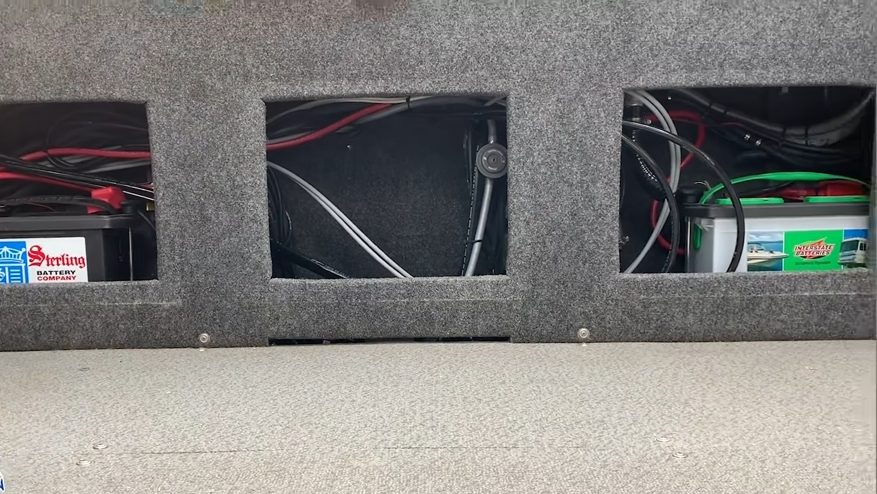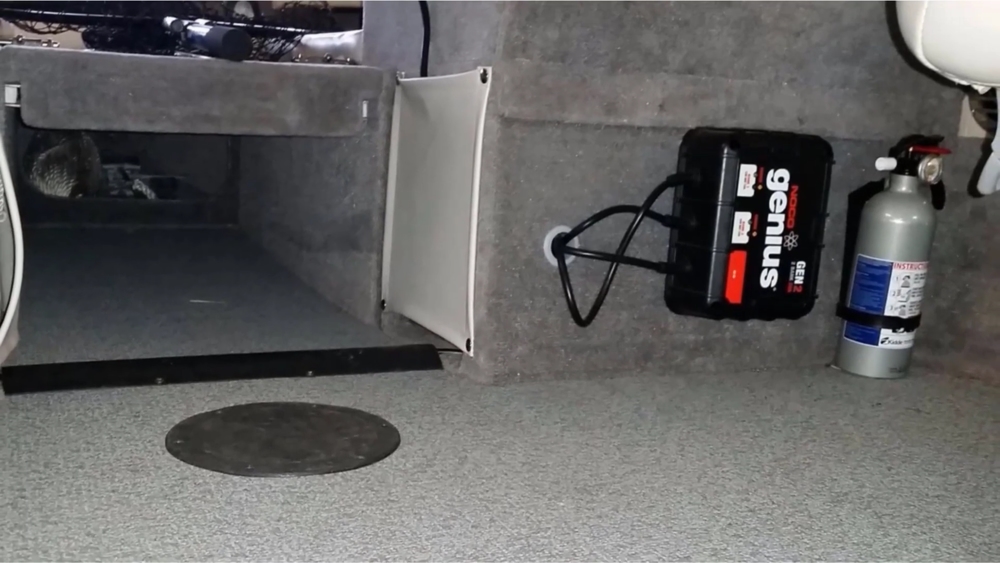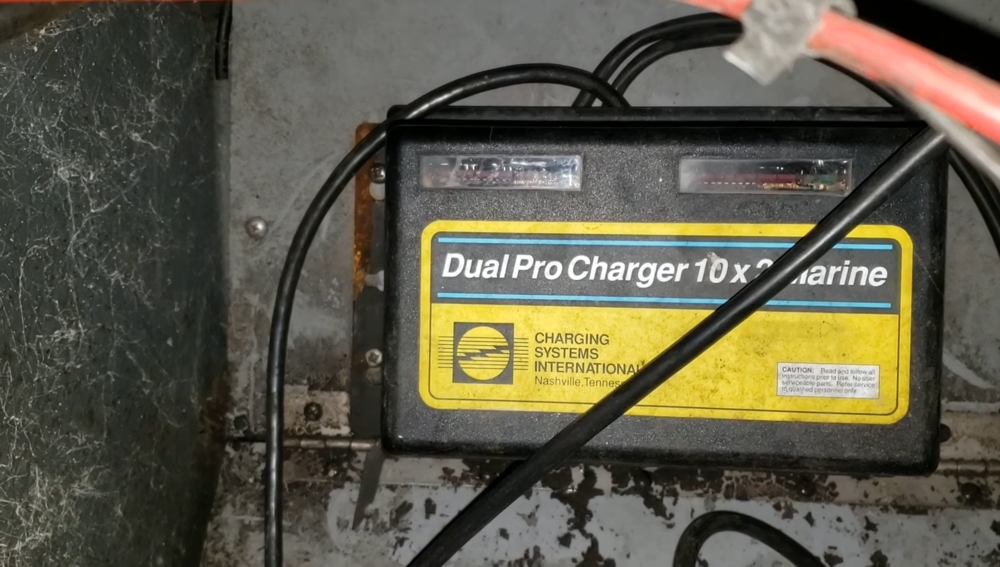What are the Different Types of Boat Batteries?
There are many different boat batteries, each with a specific purpose. Marine deep cycle batteries are used for running appliances or trolling motors. In contrast, marine starting batteries are meant to be recharged by the engine alternator and can power small engines for a short period.
It would help if you did not use a battery for powering an appliance, as it is designed to provide quick bursts of energy. A deep cycle battery is suitable for powering an electric trolling motor and other accessories. Marine dual-purpose batteries are a good option on smaller boats, but they’re not as efficient as two separate batteries.
To know if your boat battery is still good, load test it. It would be best if you did not substitute deep cycle batteries for starting batteries. They’re built differently and have thinner plates that heat and distort over long periods. A cranking battery has more thin plates for fast voltage spikes to crank the engine; they’re usually found in cars instead of boats.
There are many different boat batteries, so it’s essential to know which one you need before making a purchase. Read up on your boat’s specific requirements before buying a new battery!

How long does it take to Charge a Boat Battery?
When it comes time to charge your boat battery, it’s essential to use a quality charger and follow the correct charging procedure. How long it takes to charge a battery will vary depending on the type of battery, size, and the amperage of the charger.
Marine batteries generally take around 4-6 hours to charge fully. The amperage provided by the charger is a significant factor in how a battery charges; higher amps mean the battery will charge faster. Additionally, larger batteries will take longer to charge than smaller ones.
The time it takes to charge a trolling motor battery is based on two factors: the size of the battery and what type of charger is being used. A small trolling motor battery might only take an hour or two to charge with a high-amperage charger. While a large one could take up to 10 hours or more using a low-amperage charger.
The time needed to charge a battery depends on the amp hour rating of the battery and how discharged it is. The amp hour rating shows how much you can draw current from the battery without damaging it.
If your battery is rated at 100 amp hours and wholly discharged, then you can draw ten amps from the battery for 10 hours without damaging it. If your battery has a rating of 100 amp hours and is only partially discharged, you can draw ten amps from it for a shorter time.
The more discharged your battery is, the longer it will take to charge. If your battery is rated at 100 amp hours and you are charging it with a 2 amp charger, the charging time will be 40 hours.

What are the different types of Charging Systems?
Three types of charging systems are trickle charge, maintenance charge, and total charge.
A trickle charger is used to maintain a battery fully charged. The charge rate is so low that the battery retains its charge level without being overcharged.
A maintenance charger will keep your boat batteries charged and ready to go. This charger is used to keep batteries at their peak performance without being overcharged, damaging the battery.
A full charge charges a completely discharged battery in the shortest time possible. This is the best way to charge a battery. But, it can be dangerous if not done correctly.
The amount of time needed to charge your boat battery will depend on how discharged the battery is. If you have a 100 amp hour battery and it is ultimately released, it will take about 10 hours to charge at a rate of 10 amps.

How can I prolong the life of my boat battery?
You can do a few things to prolong the life of your boat battery.
First, don’t exceed 15 amps when charging–this will help keep your battery healthy.
Second, consider using a slow 5 amp charger instead of a fast 15 amp charger; this will save you money in the long run.
Finally, make sure to size your battery for your needs; if it’s too small, you may need to invest in a more powerful charger.
These tips will help you get the most out of your boat battery!
What are the benefits of using a battery charger?
There are many benefits of using a battery charger.
1. A battery charger is an essential tool for keeping your boat running smoothly. It can help you maintain your battery’s charge and health.
2. It can help you start your boat if the battery is dead.
3. You can use a battery charger to diagnose your boat’s electrical system problems.
4. You can also use it to recharge boat batteries and other types of batteries.
What are the most common causes of boat battery failure?
1. The most common causes of boat battery failure are sulfation, overcharging, and undercharging.
2. Sulfation is a build-up of sulfur on the lead plates in the battery that reduces the battery’s capacity and lifespan.
3. Overcharging can cause the battery to overheat, leading to grid corrosion and shortened life.
4. Undercharging can also reduce the lifespan of a battery, as it doesn’t allow it to charge fully or discharge.
5. It’s essential to use an automatic deep cycle battery charger to avoid these problems. This will help keep your batteries charged all year round when not in use.
What is the best way to charge a deep-cycle marine battery?
Charging a deep-cycle battery is not difficult, but there are some essential things to keep in mind. First, it is best to charge the batteries with an automatic charger designed for this purpose, not a household charger.
Secondly, the battery should be charged for at least eight hours before use to ensure it is fully charged and ready for service.
The best way to charge a deep-cycle battery is with a constant current at the correct voltage. You should charge it until it reaches its peak voltage and trickle-charged for an extra two to three hours.
A fully charged battery will have a voltage of about 13.6 volts and can be stored for up to three months at room temperature without losing its charge.
A deep-cycle battery is designed to be discharged, so there is no need to charge it before storage fully. Overcharging a deep-cycle battery can permanently damage the battery’s ability to accept and keep a full charge.
Can you charge a 12-volt battery with a 10 amp charger?
If you want to charge a 12-volt battery with a 10 amp charger, it will take about 3 hours. That’s because you’re charging at a rate of 10 amps. If you want to charge faster, use a larger amp charger or connect many smaller chargers in parallel.
A battery is charged by forcing electricity into it. The rate at which you charge the battery determines how long it takes to fully charge the battery (that is until its voltage reaches a specific level).
The time required to charge a battery depends on the following factors:
1. Battery capacity (measured in amp-hours)
2. Charger capacity (measured in amps)
3. Voltage of the charger
4. Temperature of the battery
5. The state of charge (SoC) of the battery before charging begins

